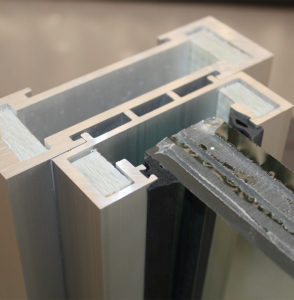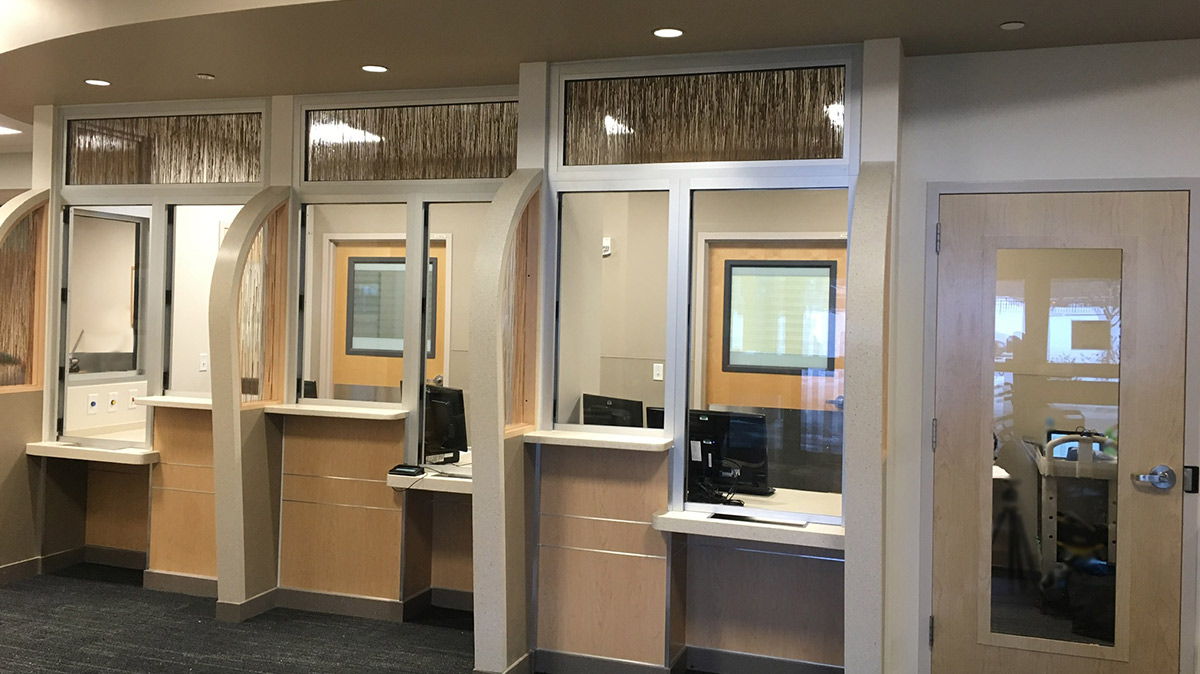In late 2020 a globally recognized Fortune 100 corporation had a big bulletproof glass problem:
Following several workplace attacks targeting similar organizations, they needed to increase their physical security. This went beyond adding a few cameras, new access cards, and reminding everyone to stop holding the door open for “nice” strangers. Given their threat profile, they needed to convert five offices and six conference rooms into bullet-resistant safe-spaces with Level 5 security. (“Level 5” means walls, windows, and doors designed to stop larger caliber assault rifles.)
“They’d tried several local glaziers,” explains Jim Richards, CEO of Total Security Solutions. “But no one wanted any part of the job.”
This is because most bulletproof companies are extremely adept in one area. For example, they may make great transaction windows, or really affordable doors, or have a good source for large custom-cut pieces of bulletproof glass. These highly focused companies then rely on third-party suppliers or independent contractors for everything else: frames and channels, fabrication, installation, etc.
That’s fine for jobs of a certain size or complexity. But after a point, this sort of fragmentary approach just won’t work.
“The finished, fabricated bullet-resistant materials and components for this job filled an entire semi-trailer truck,” Jim explains. “And there were no freight elevators to the floor the offices occupied. It all had to go in through a single window.”
Large, complex custom jobs need constant coordination across all stages of the process. Manual one-off fabrication—which is what must bulletproofers rely on—isn’t just too time-consuming, it’s also too variable. Tiny inconsistencies, ones that would never make a difference in a conventional installation, become a complete nightmare to install.
Investing in Technology and Talent
“I can see why [other companies turned the job down],” Jim says. “Either they didn’t have the expertise, or they couldn’t handle the liability, or they just didn’t have the wherewithal to make it happen.”
Because TSS has an entirely in-house process, they were able to design, engineer, fabricate, and install every single piece for that company’s security barrier. More importantly, their comprehensive perspective on the project allowed them to coordinate all of the packing and shipping with the crane riggers. Otherwise, even getting the pieces into the building would not have been possible.
“Was this some amazing feat of engineering?” Jim asks. “No. In a lot of ways, it was no different than any other job. But it illustrates that a job above a certain level of complexity or size, it can’t be approached in the piecemeal way that’s common throughout the industry. You need to bring in someone who’s invested in that in-house expertise, so they can make big plans and get big things done right without losing sight of the details.”
Always Giving the Extra 10% to Every Bulletproof Glass Project
Since 2004, TSS has created and installed tens of thousands of ballistic systems. These have been for everything from US government facilities and sports stadiums to mom-and-pop convenience stores.
You don’t design, fabricate, and install tens of thousands of ballistic barriers by making it up as you go along. From every single installation came a lesson. The result has been TSS’s four-part Proven Process. Using this road-tested process, TSS can consistently deliver high-quality barriers, installed on time, with as little hassle as possible.
What makes the TSS approach different is that it’s guided by an unwavering commitment to the “extra 10%.”
According to Jim, “I always argue that our customers should get that ‘extra 10%’ that we don’t charge for, but a lot of people would. The customer won’t even necessarily see it or know they are getting that 10%. But it’s the right way to do it, so we’re going to do it right.”
10% More Thoughtful Technology
Part of this extra 10% has meant making a point of thoughtfully adopting new technologies. A decade ago, TSS was instrumental in bringing new technology to the bullet material fabrication process. At that time, bulletproofing—even for large projects – was extremely manual, more akin to Amish cabinetmaking than a modern manufacturing process. TSS was the first to regularly use precision computer-controlled waterjet cutters, lathes, and other similar machines to produce their barriers.
“We’re still trying to stay ahead with technology. Now, that’s less about equipment, and more about how we’re using automation, integrating it into the entire process. That increases efficiency in so many ways—from materials to use of labor to saving time at every stage— the result is our customers are getting better quality barrier systems than ever, at the same price.”

TSS invests in the talent and technology to fabricate complex bulletproof glass framing systems
As an example, Jim points to their computer-controlled press breaks, lathes, and cutters. “This gives you better accuracy, repeatable results, much more efficient production, and better-quality products in every bend or hole. Those repeatable results mean less waste. That accuracy means the install goes smoother, faster, and looks better in the end. Part of the reason our installs go well is that we fabricate every single piece we can in-house. That means there’s very little field prep work. All those holes are there and perfect, done in our shop, in this tightly controlled environment.”
Installation is the Key to the Best Bulletproof Glass System
That said, even the best design—one that has been flawlessly engineered, and then fabricated with care and precision—can be botched in the install.
“Our ability to customize,” Jim notes, “comes back to our ability to install.” TSS has the largest bulletproof glass installation team in North America. As such, they are the only company able to provide end-to-end ballistic barrier solutions. “Because we install, we can design for the big picture, without losing sight of all the little details.”
Trevor Smith is an operations analyst for TSS, where he oversees installations. Performing field measurements for TSS on a daily basis gives him an important “boots-on-the-ground” understanding, and is a perfect example of how the little details are vital to the big picture.
“When I go out and measure,” Trevor explains, “I end up laying out the entire barrier on top of the counter in masking tape, using a laser and angle finder. That way engineering has all the required angles, and can focus on how that barrier is going to be broken up and executed.”
This precision and accuracy lays the groundwork for the entire system—and that responsibility falls to the installer. “If we’re installing a system,” Trevor explains, “we’ve made a promise that this barrier is going in there.” The better part of that comes back to planning—from first measurements to final polishing before everything is palletized for shipping” Sometimes that means thinking of outside of the box situations. I think there are a lot of people that will just throw their hands up and give up as soon as something doesn’t fit the spec. That’s not TSS.”


